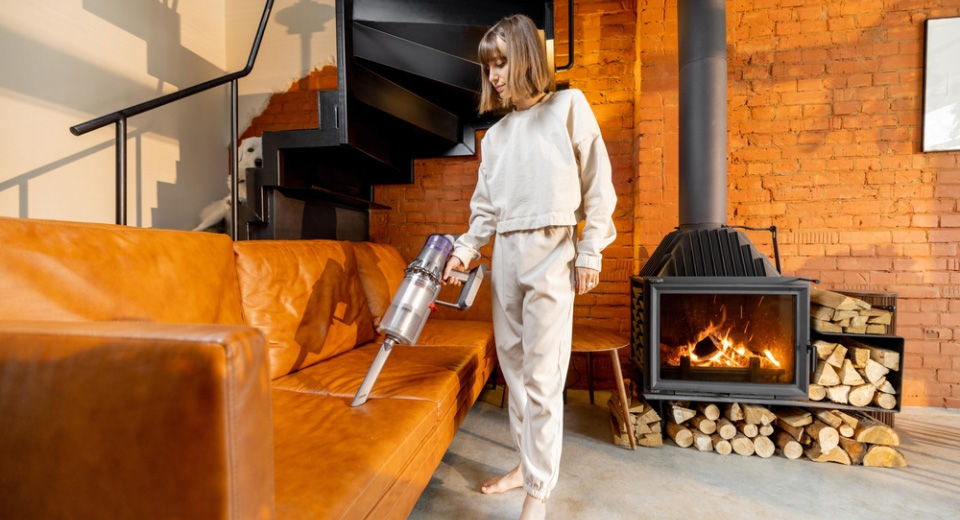1. Understand your leather

Before you start cleaning your leather couch, it's crucial to understand the type of leather it's made from. Various types, including aniline, semi-aniline, pigmented, and suede leather, require different cleaning approaches. Check the manufacturer's label or consult the furniture store to identify the specific type of leather used in your couch.
2. Regular dusting and vacuuming

Begin your leather couch care routine by dusting it regularly with a soft, dry microfiber cloth. This helps remove loose dirt, debris, and pet hair from the surface. To ensure that dirt doesn't accumulate deep within the leather, it's recommended to use a soft brush attachment while gently vacuuming the crevices and seams.
3. Spot cleaning stain

Accidents happen, and if your leather couch encounters spills or stains, address them immediately to prevent permanent damage. Follow these steps for spot cleaning:
-
To remove a stain and soak up any liquids, it's best to use a clean, dry cloth and gently blot the affected area.
-
Avoid rubbing the stain, as it may spread and cause further damage.
-
If the stain persists, gently wipe the affected area and dampen a soft cloth with distilled water and a mild soap solution (baby soap or mild dish soap works well). Prior to applying the cleaning solution to the stain, it should be tested in an inconspicuous spot.
-
Once the stain is gone, wipe the area with a clean, damp cloth to remove any soap residue.
-
Dry the spot with a soft, dry cloth.
4. Deep cleaning

Over time, your leather couch may accumulate dirt and oil that can dull its appearance. A deep cleaning session every six months to a year is recommended to keep your leather couch looking its best. For this, you'll need a leather-specific cleaner. Here's how to deep clean your leather couch:
-
Apply a small amount of leather cleaner to a soft, damp cloth. Be sure to follow the instructions provided with the cleaner.
-
Gently clean the entire couch in a circular motion, paying attention to areas with heavy use, like armrests and headrests.
-
Once cleaned, use a separate damp cloth to wipe off any excess cleaner from the leather.
-
Dry the couch with a soft, dry cloth and allow it to air dry completely.
5. Conditioning the leather

To keep your leather couch durable and prevent it from drying out, consider conditioning it every six months or as the manufacturer recommends. Leather conditioner helps retain the natural oils in the leather, keeping it soft and preventing cracks. Apply the conditioner following the product instructions and let it soak in for the recommended duration before wiping off any excess.
6. Protection from sunlight

Avoid placing your leather couch in direct sunlight, as prolonged exposure can lead to fading and drying of the leather. Position the sofa away from windows or use curtains or blinds to block out harsh sunlight if possible.
Conclusion
Caring for your leather couch is a simple yet vital process to ensure its lasting beauty and comfort. Regular dusting, spot cleaning, deep cleaning, conditioning, and protecting it from sunlight are key elements of an effective maintenance routine. By following these steps and using the appropriate cleaning products, you'll enjoy a luxurious and inviting leather couch that will become a cherished centerpiece of your home for many years to come.



.jpg?updatedAt=1735197007532)

/The_Ultimate_Guide_to_Cleaning_Couch_Cushions_the_Right_Way.jpg?updatedAt=1728383746466)




.jpg?updatedAt=1735200955338)